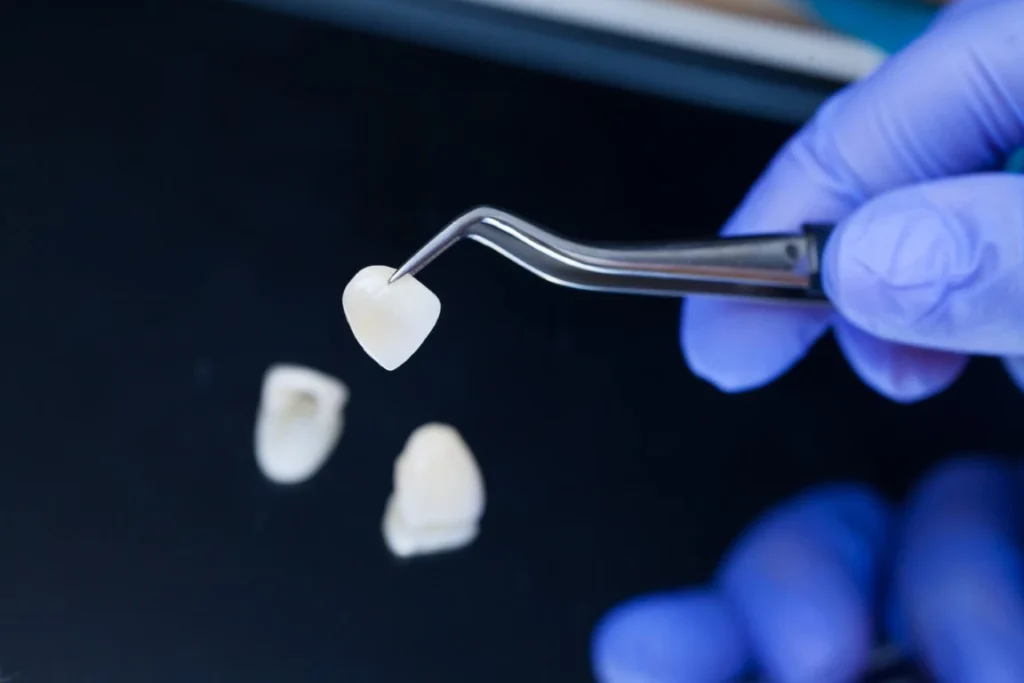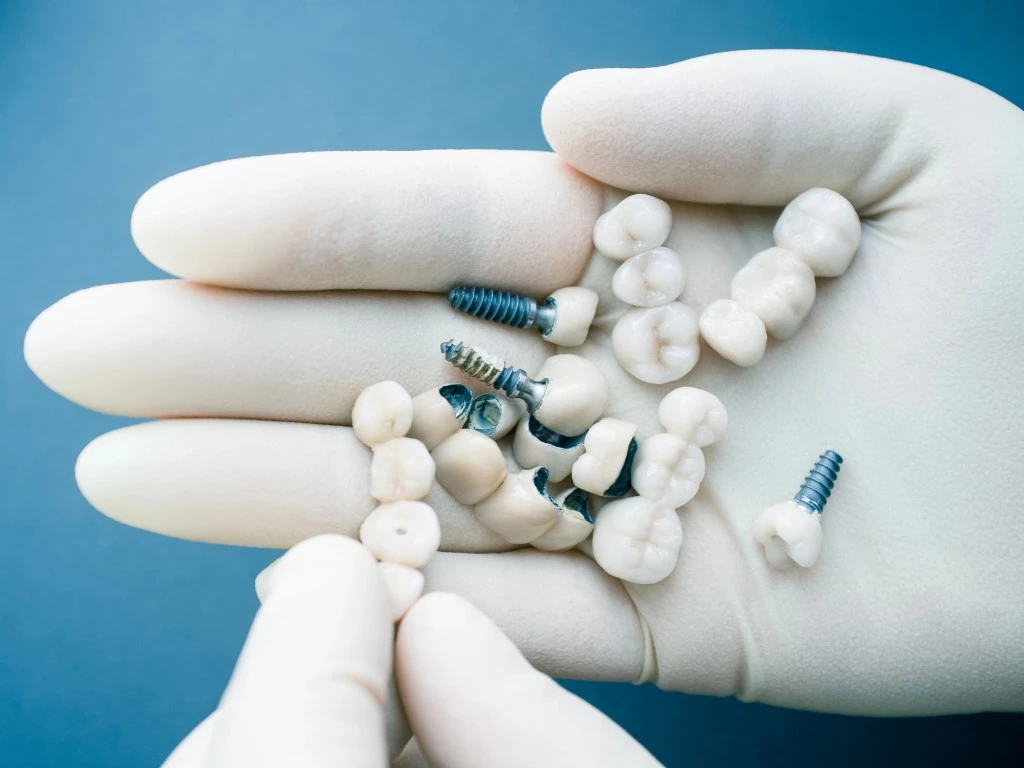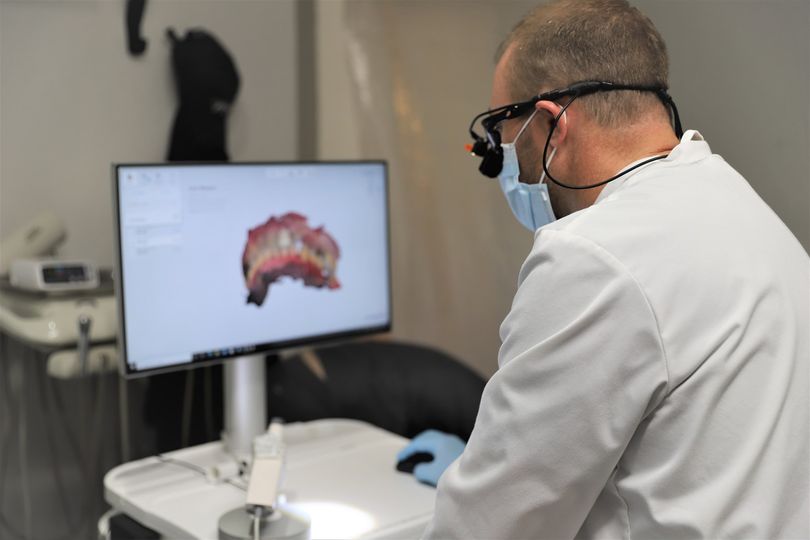
Your smile is one of the first things people notice when they meet you. However, if you are experiencing extreme insecurity about your smile, you may find yourself shying away from smiling. That’s where smile makeovers come in. This transformative process helps you address aesthetic and functional concerns. But how do they help you reach this goal?
A smile makeover isn’t a simple, one-size-fits-all process, and your cosmetic dentist takes time and consideration when designing your smile. But, beyond this, they will also turn to you to ensure they’re meeting your goals. If you want to learn more about how your cosmetic dentist will help you achieve your dream smile, keep reading.
What is a Smile Makeover?
A smile makeover is a comprehensive cosmetic dental process designed to enhance both the aesthetic appeal and functionality of your smile. It’s far from a one-size-fits-all solution; instead, it’s a highly personalized journey where your cosmetic dentist works closely with you to understand your specific goals.
This transformation can involve a variety of procedures, tailored to address individual concerns such as discoloration, missing teeth, gaps, chips, or misaligned teeth. The ultimate aim is to create a smile that not only looks beautiful and natural but also improves your oral health and boosts your self-confidence, ensuring you achieve the radiant smile you’ve always dreamed of.

How Dentists Help You Achieve Your Dream Smile
When you turn to them for a smile makeover, your dentist takes their time designing a smile that will look best on you. Their first concern is improving any lost functionality. Whether you’re struggling to clean your teeth or have bite problems, this will be the first step in designing your perfect smile.
From there, they will help you achieve a visually beautiful smile. But what makes an attractive smile? Your dentist will help you achieve a brighter smile, ensure your teeth are the right size for your mouth, and fill gaps that may hurt your confidence. There are several cosmetic procedures they’ll consider when helping you reach your aesthetic goals, including:
- Dental Implants
- Dentures
- Veneers
- Orthodontics
- Bridges
- Whitening
They’ll consider your opinion, because that is the ultimate goal of the procedure. You want to ensure you have a smile that you love at the end of the process. If you have any specific wants or needs that they haven’t discussed, don’t hesitate to bring them up. With your input, your team can ensure you’re reaching your long-term smile goals.
Why Smiles Aren’t One-Size-Fits-All
When it comes to designing your dream smile, you want to ensure you’re working with a dentist who will customize your smile to your face. No two people should have identical smiles. Your smile plays a major role in distinguishing who you are, and by attempting to replicate another person’s smile exactly, you can lose your individuality.
If you’re considering investing in a smile makeover, don’t hesitate to talk to your dentist about what you love about your smile and want to maintain after your cosmetic procedures. Whether you love the size, shape, or color of your teeth, every detail is important. While there may be things you don’t love, you shouldn’t have to give up the things you do love to reach your goal.
An experienced cosmetic dental team should be able to maintain your favorite parts of your smile while making functional and aesthetic improvements. Make sure to look through your dentist’s gallery to ensure they have the skills to help you transform your smile without giving you the same smile as everyone else.
The Emotional Side of a New Smile

While getting a smile makeover is a great way to improve the appearance and functionality of your smile, it can be an incredibly emotional process. You may have spent years upset by your smile, and it isn’t uncommon for patients to be overcome by intense emotions throughout this process. An experienced team will offer support throughout this process.
If you’ve found yourself pulling away from loved ones and skipping nights out with friends due to insecurities about your smile, trust that this is a great way to restore confidence. With the support of an expert cosmetic dental team, you can trust that you won’t miss another holiday, party, or dinner out with loved ones due to shame surrounding your smile.
Is It Time for You to Get a Smile Makeover?
Although a smile makeover might sound like a great idea, you may be on the fence about whether you’re a good candidate. There are a few clear signs that it’s time for you to get a smile makeover, including:
- Significant Damage: Whether chipped, cracked, or broken, damage that impacts functionality is a clear sign that you’re a good candidate for a smile makeover.
- Missing Teeth: Whether your teeth fall out or break, a makeover can help you address these gaps and restore functionality.
- Discoloration: If you have staining that cannot be addressed through professional whitening, a makeover may be your best option.
- Age-Related Changes: As you age, changes to your smile, like increased fragility, may signal that a makeover is your next step.
- Self-Conscious: The biggest indication that a smile makeover is right for you is a fear of showing off your smile to your friends and family.
Whether you’re worried about aesthetics or dealing with major functionality problems, consider talking to your dentist about this procedure. They can provide professional advice and tips to ensure you’re ready to undergo more complex cosmetic procedures.

Let Bismarck Advanced Dental & Implants Deliver Your Dream Smile
Achieving your dream smile isn’t just about appearances; it’s also about restoring lost function. When you’re ready to start the smile makeover process, trust that our Bismarck Advanced Dental & Implants team is here to make your dreams come true. Whether you’re considering veneers, implants, Invisalign, or a combination of services, we’re committed to helping you reach your smile goals.
If you would like to learn more about our cosmetic dentistry services or schedule an appointment, don’t hesitate to contact us today.




